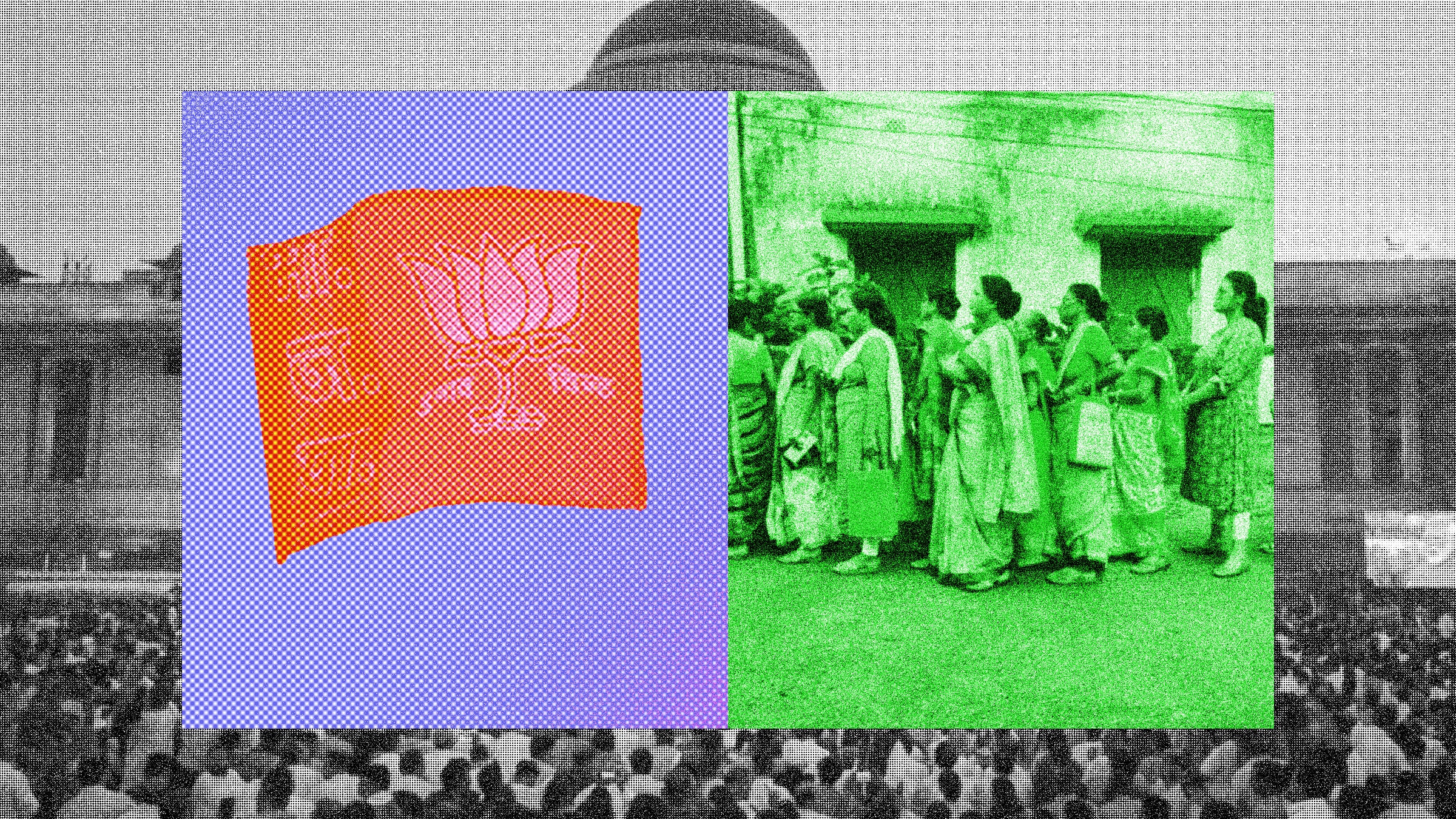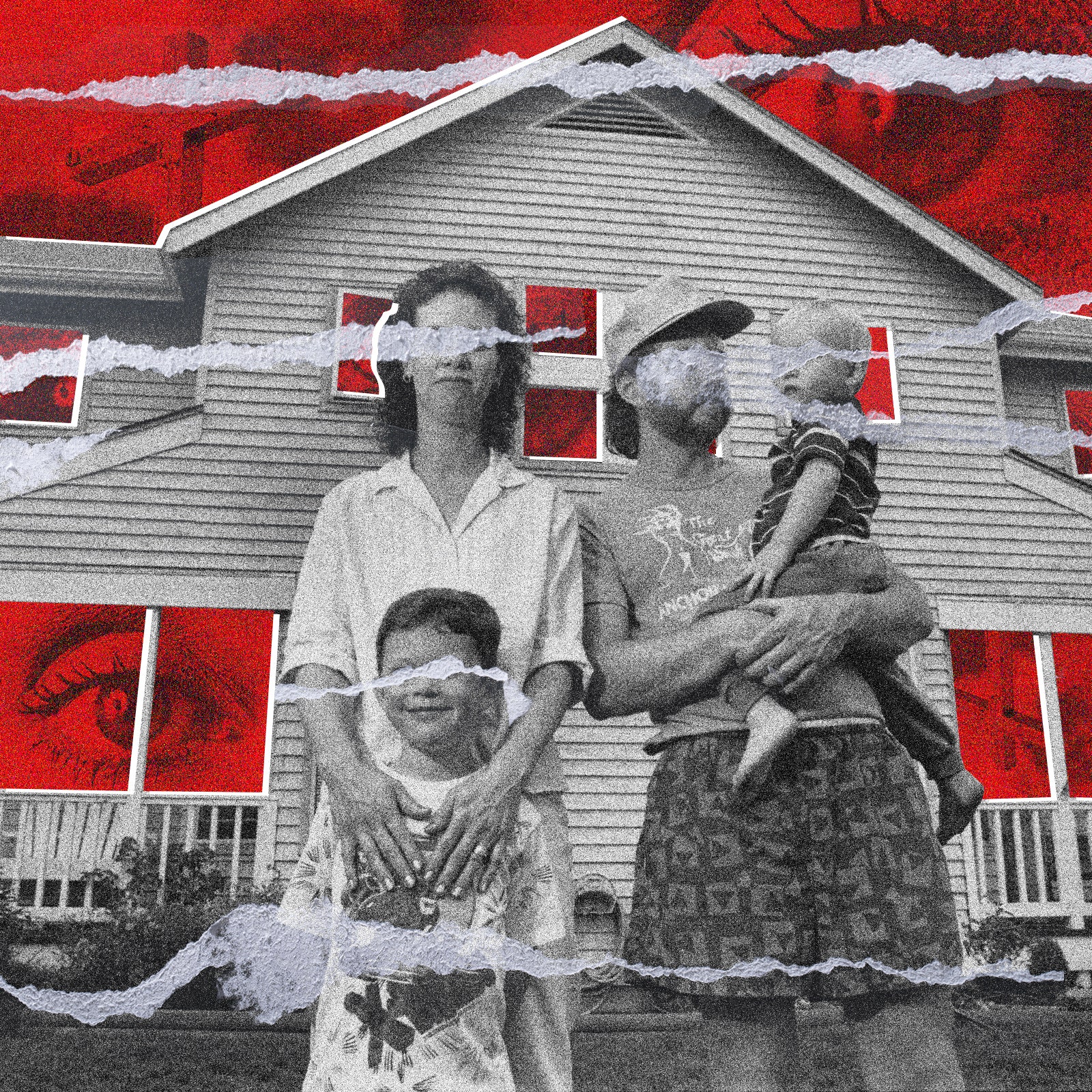How a Secret BJP War Room Mobilized Female Voters to Win the Indian Elections

In April, an unassuming old building in New Delhi’s furniture market housed roughly 30 youngsters. Some were hunched over their laptops crunching data on Excel or analyzing a heat map, while others huddled to discuss strategy. These were engineering graduates, economists, political scientists, and others. There were office chairs, desks, and a couple of white boards.
The entire setup could easily have passed as a startup office, but it wasn’t. This was an election war room.
From there, Sapiens Research founder Rimjhim Gour’s team served as the brains of Narendra Modi’s Bharatiya Janata Party, or BJP. The party’s senior leadership had entrusted Gour with mobilizing 12.5 million female voters across India, and her team spent their days crunching historical polling trends, using data to pinpoint critical constituencies, browsing WhatsApp for real-time on-ground updates, and shaping electoral strategies to usher in BJP for a third consecutive term.
Gour’s team was successful: Modi was sworn in as the Prime Minister on June 9 after the BJP formed the government through an alliance with 293 seats. India’s general elections happen once in five years, and in 2024, a record-breaking 642 million Indians voted. Of the total voters polled, 312 million were women. This was BJP’s grand experiment: The party wanted to micro-target and mobilize female voters, and hired people like Gour to make it happen—revealing, says Amogh Dhar Sharma, author of the forthcoming book The Backstage of Democracy: India’s Election Campaigns and the People Who Manage Them, “the hidden power of a new technocratic elite that has become critical for parties and politicians to fight elections and win votes in India.”
“In most places [in India], electorates who are registered but not voting are always women,” says Gour, who previously worked as a media strategist at Indian Political Action Committee, the legendary firm widely recognised for propelling Modi to victory in 2014. Dressed in an off-white salwar kameez, with a big pair of round glasses keeping her hair off her face, Gour is suave and confident, and fluently switches between English and Hindi. “That’s when it struck me that if we have to mobilize someone, it has to be women; they make up 50% of the electorate but still haven’t been tapped into completely in a systematic approach.”
Over the past decade, the Indian electioneering landscape has been overhauled by the advent of social media, data-driven insights, and political consultants. “I think the 2024 Indian general election confirms … the inordinate role of campaign professionals in Indian elections,” says Sharma. From call centers being used for “screening” party supporters, to WhatsApp for real-time updates, and a specialized app for reporting and documenting meetings, each tool served a unique purpose in this BJP campaign. “The speed at which these technologies are being embraced by parties and the growing emphasis on them is certainly unique,” says Sharma.
The BJP’s use of technology and social platforms has evolved as politics has, as they have gone from being niche tools to essential infrastructure. The BJP emerged as the highest spender on political ads on Meta platforms this election. If the 2019 election was characterized as the “WhatsApp Election” because of the excessive use of the messaging platform, the 2024 campaign was the “YouTube Election.” It marked an unprecedented use of YouTube influencers by BJP that featured softball questions with political candidates and paid promotions. While rival parties worked to catch up, the BJP still leads the pack with dedicated cyber troops for year-round content creation—and not just during elections.
And the BJP’s decision to hire a dedicated consultant to woo women votes seems like the next step in this broader evolution of using tech.
Historically, women voters lean towards progressive parties. But over the past decade, under Modi’s rule—characterized by what critics describe as creeping authoritarianism due to attacks on civil society, religious polarization, and cracking down on dissent—there has been a noticeable shift, with both the 2014 and 2019 elections recording higher female participation and increased support for the BJP amongst female voters. The BJP had been launching female-friendly welfare schemes including subsidized cooking gas cylinders and maternity leaves, for greater equality. As a result, in 2019, women’s poll participation exceeded men’s for the first time. This time it was about going a step ahead to remind a specific cohort of targeted women about Modi’s policies and nudge them to go out to vote.
Gour’s get-out-the-vote effort, which used a potpourri of apps, data analysts, and personal outreach by party workers, thus represented a convergence of two trends in an attempt to consolidate a women’s vote newly open to the BJP.
For Modi to return to power, BJP had to win 272 of the 534 parliamentary seats. Gour’s young team was focused on 235 seats, which they identified as “critical seats”—areas where the BJP has either won or lost by less than 10% margin of votes in the past. The goal was to identify women self-help groups, or SHGs, in those 235 critical voting areas, and then use BJP’s party workers, or karyakartas, to meet, motivate, and mobilize female voters.
India’s rural SHGs are collectives of 10 or more women who pool their money and support each other through savings; nearly 100 million women are part of SHGs. And women involved with SHGs are already more politically active.
“Often the hardest problem for political parties who want to engage with women and get women to participate in public life is to figure out how to get these women to participate in a political cause,” says Anirvan Chowdhury, a postdoctoral fellow at Harvard University who studies the BJP’s attempts to target female voters. “And in a context where politics is often seen as unsuitable for women, reframing politics as seva [selfless service] or using existing institutional frameworks like the SHG structure helps solve that problem.” Because of this sustained effort, there has been a pro-BJP tilt in women’s political preference in many northern states which have a strong history of support for Modi’s BJP, research shows.
For Gour’s Sapiens Research team, the challenge wasn’t merely to locate these self-help groups but to identify potential BJP supporters within these groups—a task that requires data analysis. Ujjawal Agrawal, the program manager at Sapiens Research, spearheaded the initiative of meticulously mapping voter and demographic information to phone numbers of women in “critical” SHGs. Agrawal then mustered the BJP’s in-house network of 20,000 call center operators—run by another Indian Political Action Committee alumnus Diggaj Mogra—to identify BJP sympathizers within the large SHG cohort.
The call centers did so by asking a few pointed questions. One key question was whether the woman would help mobilize 10 other women for the BJP. If she responded positively, she was deemed a supporter. If the SHG member’s response was no, then she would be categorized as a swing voter or non-supporter. For instance, in West Bengal, Agrawal said, 10% of women who were part of the SHG refused to mobilize voters for the BJP. (Interestingly, this approach bears some broad similarities to the Donald Trump campaign’s strategy for this year’s US election.)
Soni Bam is the sort of SHG mobilizer Gour’s team was looking for. She is from the Leparada district in the northeastern state of Arunachal Pradesh and her eight-member group, called Hiri Molo, is dedicated to making women independent by finding ways to earn and save. But since October 2023, she has been involved in the BJP’s election-related work: going door-to-door explaining women about the elections, and advocating BJP schemes that will help women. She also asks women to attend meetings organized by the BJP workers.
Gour’s team used the 20,000 callers from the BJP’s call center to do 300,000 “screening” calls a day to create the final target list. “We are the brain and call centers are basically your eyes [of political campaigns],” says Gour.
It has become commonplace in India for political parties to set up call centers in the weeks leading up to polling, says Sharma. “These call centers can provide a range of functions—encouraging citizens to update their voter ID card, reminding them of the party’s manifesto promises, gauging their intention to vote, and even soliciting their feedback on the ticket distribution or chief minister nomination process.” But what’s unique, says Sharma, about the BJP is the massive investment in an in-house network of 20,000 call center operations across 350 locations. No other party has a comparable infrastructure for electioneering.
BJP’s central leadership monitored the SHG meetings organized by party workers through the revolutionary SARAL app, which stands for Sangathan Reporting and Analysis. (Sangathan in Hindi means “organization.”) It’s the BJP’s “digital handheld office.” Nearly 4 million BJP party workers use the app monthly, where they can upload party activities and share images of events, and details of people they meet during campaigns. In the months leading up to elections, the BJP ran a campaign on the app called “Shakti Chaupal” to mobilize female voters. It was overseen by Gour’s team.
The tech-savvy team of data analysts at Sapiens’ office in Delhi would then aggregate the trends, and submit weekly or monthly reports on the extent of voter mobilization to party leaders. “If they send us those two photos on a WhatsApp number, it will be difficult for us to monitor,” Agrawal said. “We get clear, systematic data from SARAL.” In the three months leading up to May, an estimated 5000 meetings were conducted, and 5877 party workers helped Sapiens team in mobilization.
In late April, during the first phase of the election, where nearly one-fifth of all parliamentary seats were going to polls, witnessed poor voter turnout. The dip in voter turnout compared to elections in 2019, gripped Gour and the BJP with panic. Early doubts over BJP’s decisive victory surfaced online. Soon, the BJP machinery redoubled outreach activity and notched up demands on state-incharges to address voter apathy.
One crucial battlefield for the BJP was the Kendrapara constituency in the eastern state of Odisha, which has been ruled by the Biju Janata Dal, or BJD, for two decades. Gour’s team was responsible for mobilizing the SHGs in the area. When it came time to vote, Gour’s war room sprang into action. Her team began calling party workers every few hours for updates on the SHGs voting. After that, a round of bot calls were made to the SHG women, since the human call centers were at capacity. At the end of the day, an automated call went out to SHG women, asking if they mobilized, who they mobilized, and if they could share pictures and data.
This process was repeated in constituencies across the country, to great effect: By the end of the election, Gour says, they personally mobilized 12 million women voters.
Despite Gour’s best efforts, though—and positive feedback they received on WhatsApp, SARAL, and call centers—the BJP suffered huge losses in their Hindi-speaking heartland states such as Uttar Pradesh and Rajasthan. From being the single largest party with 303 seats in 2019, Modi’s BJP was cut down to size with 240 seats, and formed the government by entering into a power-sharing agreement with smaller regional parties.
Consultants like Gour continue to claim the election as a win, with a caveat that while their work contributed to the vote share of the candidates, they were “not the only factor.” Other experts tell WIRED that there were likely additional reasons women came out to vote during this cycle, such as religious polarization and welfare programs such as free food or cash handouts. The ultimate lesson may be about the enduring power of traditional methods.
“No Indian politician,” says Sharma, “can as yet dispense with holding public rallies, road shows, or door-to-door canvassing, which create momentum both for ordinary voters and for party workers themselves.”




